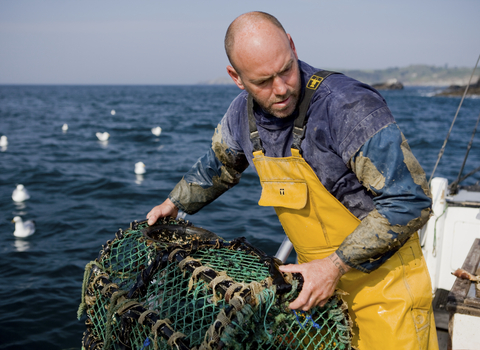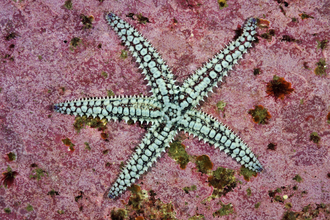What The Wildlife Trusts are doing for the sea
For decades fishing in UK waters was guided by the EU Common Fisheries Policy. The UK’s departure from the European Union (Brexit) lead to a change in how we manage our seas and our fisheries. We believe that this change presents opportunities for taking the best of the Common Fisheries Policy and improving it to make UK fisheries management world-leading. This means making sure that all fishing activity is sustainable; not just in terms of fish stocks but also reducing impacts of fishing on the wider marine environment. We are working hard to make sure that there is a just transition for fisheries which puts wildlife and the environment at the heart of future fisheries management and future legislation.
In 2020 the Fisheries Act was passed which sets out how UK fisheries will be managed outside of the Common Fisheries Policy. Embedded throughout the Fisheries Act are commitments to managing fisheries sustainably through 8 fisheries objectives which are:
- the sustainability objective*,
- the precautionary objective*,
- the ecosystem objective*,
- the scientific evidence objective*,
- the bycatch objective*,
- the equal access objective,
- the national benefit objective, and
- the climate change objective*.
* These objectives are key to ensuring environmental sustainability
The policy framework to achieve these objectives is laid out in the Joint Fisheries Statement, published in 2022 by the 4 UK fisheries policy authorities.
We are working hard to make sure that wildlife and the environment are at the heart of future fisheries management and legislation. We believe we need a just transition for fishers, where fisheries are brought into the wider context of marine environmental management through improved marine spatial prioritization and the sustainable planning of fishing activities. Fishers should be supported to transition for more sustainable fishing practices or, where appropriate, alternative forms of income. The Government should also invest in modernizing the fishing industry through the use of digital technology to improve monitoring, compliance and transparency.
Offshore Marine Protected Areas – conservation not compromise
It is vital that Marine Protected Areas (MPAs) are well-managed, with activities that are likely to cause damage to protected habitats or species excluded from these special areas. Under the EU’s Common Fisheries Policy, the UK had to seek the agreement of all EU Member States whose vessels regularly fish in UK seas to impose controls on fisheries to protect offshore MPAs (beyond 12 nautical miles). This often led to compromise rather than conservation for offshore MPAs, with areas of habitat being left open to damaging fishing activities to appease fishing interests.
The Wildlife Trusts worked hard during the exit negotiations, talking to the Government to ensure that offshore MPAs would be fully protected after the UK left the EU. Firstly, we believe this means that that any non-UK vessels must abide by the same rules as UK boats. Secondly, while there needs to be discussion with other countries, the UK government must have the final say and this must be that all damaging activities are excluded from offshore MPAs.
The powers set out in the Fisheries Act 2020, have allowed the Marine Management Organisation (who manage England’s offshore seas) to introduce new byelaws to manage fishing activity within offshore MPAs in England. The English Government set its own target of ensuring all fishing in offshore MPAs is appropriately managed by the end of 2024. As of February 2024, out of 50 offshore MPAs in English waters only 5 MPAs have management measures protecting the whole-site from bottom-towed fishing gears, while a further 12 prohibit bottom towed fishing within certain areas of the MPAs. Management measures for other fishing gears are yet to be introduced for offshore English MPAs (except for The Canyons, where an prohibition on anchored net and line gears in in place for within a specified area of the site)
Fisheries management measures were introduced in June 2022 for four marine protected areas:
- Dogger Bank Special Area of Conservation (Bottom towed gear prohibited across the entire site)
- Inner Dowsing, Race Bank and North Ridge Special Areas of Conservation (Bottom towed gear and static gear prohibited across certain habitats within the site)
- South Dorset Marine Conservation Zone (Bottom towed gear prohibited across the entire site)
- The Canyons Marine Conservation Zone (Bottom towed gear and anchored net and line Prohibited within a specified area of the site)
Fisheries management measures for a further 13 marine protected areas came into force on 22nd March 2024
-
Cape Bank Marine Conservation Zone (Bottom towed gear prohibited in the offshore portion of the site)
-
Lands End and Cape Bank Special Area of Conservation (Bottom towed gear prohibited in the offshore portion of the site)
-
East of Haig Fras Marine Conservation Zone (Bottom towed gear prohibited across the entire site)
-
Farnes East Marine Conservation Zone (Bottom towed gear prohibited within specified areas of the site covering areas of known reef habitat)
-
Foreland Marine Conservation Zone (Bottom towed gear prohibited within specified areas of the site covering areas of known reef habitat)
-
Goodwin Sands Marine Conservation Zone (Bottom towed gear prohibited within specified areas of the offshore portion of the site covering areas of known reef habitat)
-
Haig Fras Special Area of Conservation (Bottom towed gear prohibited across the entire site)
-
Haisborough, Hammond and Winterton Special Area of Conservation (Bottom towed gear prohibited within specified areas of the offshore portion of the site covering areas of known reef habitat)
-
Hartland Point to Tintagel Marine Conservation Zone (Bottom towed gear prohibited within the offshore portion of the site)
-
North Norfolk Sandbanks and Saturn Reef (Bottom towed gear prohibited within specified areas of the site covering areas of known reef habitat)
-
Offshore Brighton Marine Conservation Zone (Bottom towed gear prohibited within specified areas of the site covering areas of known reef habitat)
-
South of Celtic Deep Marine Conservation Zone (Bottom towed gear prohibited within a specified area of the site covering areas of known reef habitat)
-
Wight-Barfleur Reef Marine Conservation Zone (Bottom towed gear prohibited across the entire site)
We are continuing to talk to the English Government to ensure that appropriate management measures for the remaining MPAs are brought in as quickly as possible, and are holding them to their deadline of 2024.






